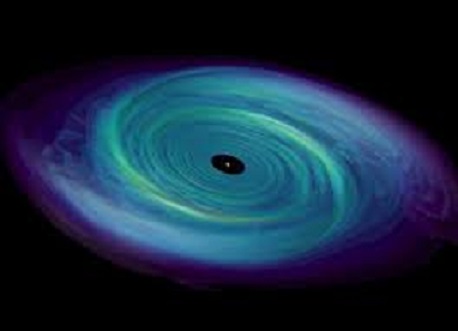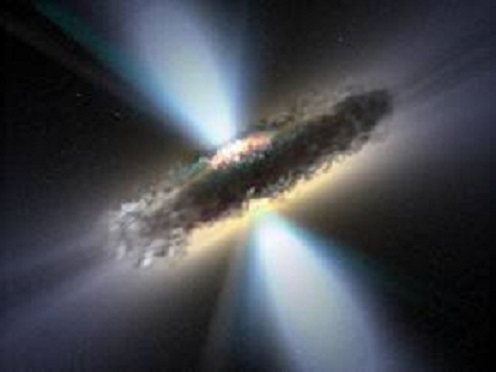

| Visitors Now: | |
| Total Visits: | |
| Total Stories: |

| Story Views | |
| Now: | |
| Last Hour: | |
| Last 24 Hours: | |
| Total: | |
New kind of Cosmic Flash may Reveal Something Never Seen Before: Birth of a Black Hole
Friday, May 3, 2013 16:37
% of readers think this story is Fact. Add your two cents.
May 3,2013
(Phys.org) —When a massive star exhausts its fuel, it collapses under its own gravity and produces a black hole, an object so dense that not even light can escape its gravitational grip.
According to a new analysis by an astrophysicist at the California Institute of Technology (Caltech), just before the black hole forms, the dying star may generate a distinct burst of light that will allow astronomers to witness the birth of a new black hole for the first time.

A computer-generated image of the light distortions created by a black hole. Credit: Alain Riazuelo, IAP/UPMC/CNRS
Tony Piro, a postdoctoral scholar at Caltech, describes this signature light burst in a paper published in the May 1 issue of the Astrophysical Journal Letters. While some dying stars that result in black holes explode as gamma-ray bursts, which are among the most energetic phenomena in the universe, those cases are rare, requiring exotic circumstances, Piro explains.
“We don’t think most run-of-the-mill black holes are created that way.” In most cases, according to one hypothesis, a dying star produces a black hole without a bang or a flash: the star would seemingly vanish from the sky—an event dubbed an unnova. “You don’t see a burst,” he says. “You see a disappearance.”
But, Piro hypothesizes, that may not be the case. “Maybe they’re not as boring as we thought,” he says

According to well-established theory, when a massive star dies, its core collapses under its own weight. As it collapses, the protons and electrons that make up the core merge and produce neutrons. For a few seconds—before it ultimately collapses into a black hole—the core becomes an extremely dense object called a neutron star, which is as dense as the sun would be if squeezed into a sphere with a radius of about 10 kilometers (roughly 6 miles).
This collapsing process also creates neutrinos, which are particles that zip through almost all matter at nearly the speed of light. As the neutrinos stream out from the core, they carry away a lot of energy—representing about a tenth of the sun’s mass (since energy and mass are equivalent, per E = mc2).

According to a little-known paper written in 1980 by Dmitry Nadezhin of the Alikhanov Institute for Theoretical and Experimental Physics in Russia, this rapid loss of mass means that the gravitational strength of the dying star’s core would abruptly drop.
When that happens, the outer gaseous layers—mainly hydrogen—still surrounding the core would rush outward, generating a shock wave that would hurtle through the outer layers at about 1,000 kilometers per second (more than 2 million miles per hour).
Read more at:
More information: The Astrophysical Journal Letters paper is titled “Taking the ‘un’ out of unnovae.”
Journal reference: Astrophysical Journal Letters
Provided by California Institute of Technology


